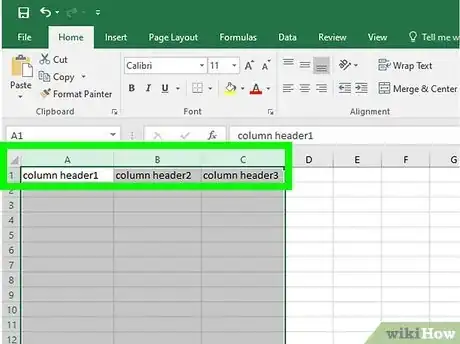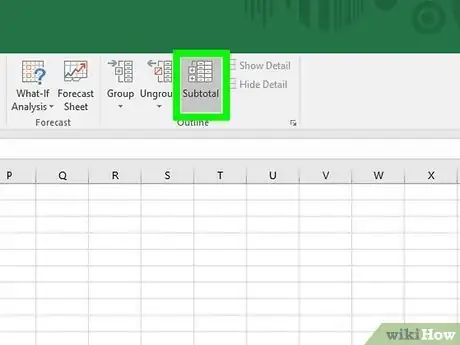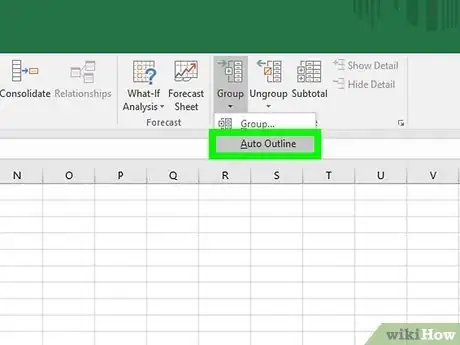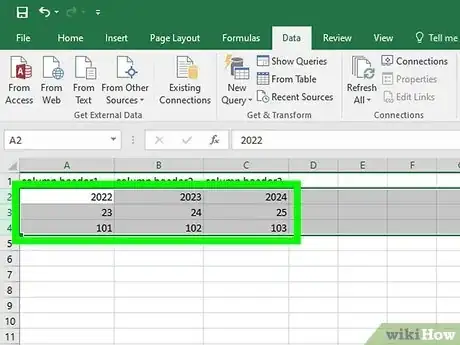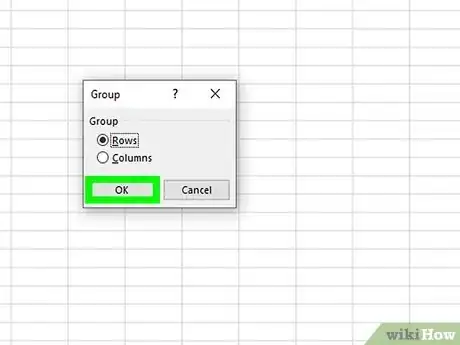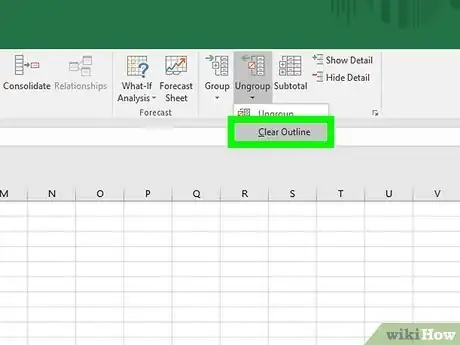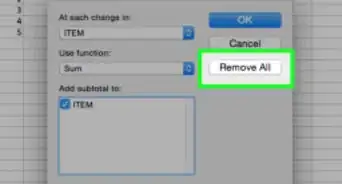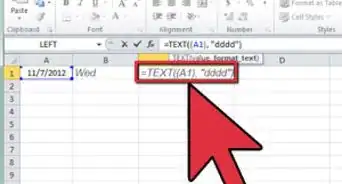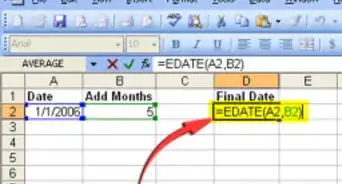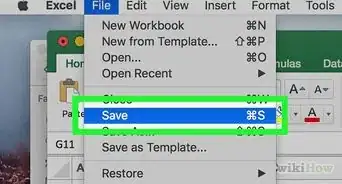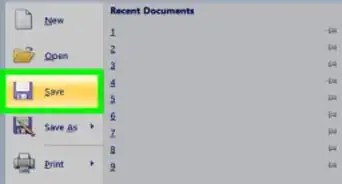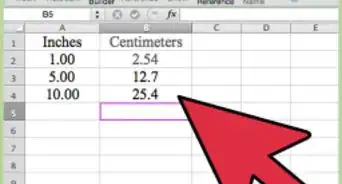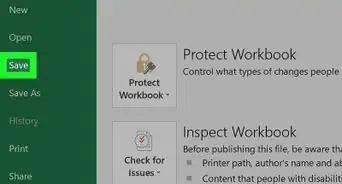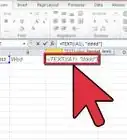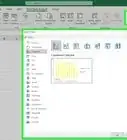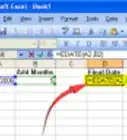Layer your data to stay organized
This article was co-authored by wikiHow staff writer, Kyle Smith. Kyle Smith is a wikiHow Technology Writer, learning and sharing information about the latest technology. He has presented his research at multiple engineering conferences and is the writer and editor of hundreds of online electronics repair guides. Kyle received a BS in Industrial Engineering from Cal Poly, San Luis Obispo.
The wikiHow Tech Team also followed the article's instructions and verified that they work.
This article has been viewed 1,501,603 times.
Learn more...
Outlining (grouping) data in Excel is a great way to organize and summarize data. This feature nests your information into up to eight levels. Inner levels have the detailed data for the surrounding outer level. As long as your data has column headings and no blank rows, you can automatically group and outline automatically with Excel. This wikiHow guide teaches you how to group and outline Excel data so you can work with large data sets more efficiently. This works on Windows and Mac!
Things You Should Know
- Prepare your data by making column or row headers and getting rid of blank rows and columns.
- Outline rows or columns automatically by selecting a cell in the data and going to Data > Group > Auto Outline.
- For the manual method, click the Group button and choose “Rows” or “Columns.”
Steps
Preparing Your Data
-
1Organize the data you want to outline. Each column should have a column header in the first row. Make sure the range you’re going to outline doesn’t contain blank rows or columns.[1]
- For a general spreadsheet guide, check out how to make a spreadsheet in Excel and format it.
- If you’re looking for Excel database info, read our guide on creating a database from an Excel spreadsheet.
- Are you using the free version of Excel and considering upgrading to Microsoft 365? See our coupon site for Staples discounts.
-
2Optionally, create a summary row. This is also called a subtotal. You have two options for this:
- Select a cell in the data range. Go to the Data tab and click Subtotal in the Outline group.
- Insert summary rows with your own formulas. For example, you could use the SUM function to subtotal information. These can go above or below the data.
- If you place your summary rows above the data, open the dialog box in the Outline group of the Data tab (it’s the right angle with an arrow). Uncheck “Summary rows below detail.”
Outlining Automatically
-
1Select a cell that’s in the range you’re going to outline. This can be any cell in the data.
- Your data must have column headers and no blank lines for this feature to work.
-
2Click the Data tab. It's on the left side of the green ribbon that's at the top of the Excel window. Doing so will open a toolbar below the ribbon.
-
3Click the down arrow under the Group button. You'll find this option on the far-right side of the Data tab. A drop-down menu will appear.
-
4Click Auto Outline. It's in the Group drop-down menu.
- If you receive a pop-up box that says "Cannot create an outline", your data doesn't have an outline-compatible formula in it. You may also have some blank cells in your data or missing column headers. You'll need to manually outline the data.
Outlining Manually
-
1Select your data. Click and drag your cursor from the top-left cell of the data you want to group to the bottom-right cell of the data.
-
2Click Data if this tab isn't open. It's in the left side of the green ribbon at the top of Excel.
-
3Click Group. It's on the right side of the Data toolbar.
-
4Select a group option. Click Rows to minimize your data vertically, or click Columns to minimize horizontally.
-
5Click OK. It's at the bottom of the pop-up window. Your grouped data is all set!
Minimizing & Clearing
-
1Minimize your data. Click the [-] button at the top or on the left side of the Excel spreadsheet to hide the grouped data. In most cases, doing this will only display the final line of the data.
-
2Clear your outline if needed. Click Ungroup to the right of the Group option, then click Clear Outline... in the drop-down menu. This will ungroup and unhide any data that was minimized or grouped previously.
Community Q&A
-
QuestionHow do I reverse the grouping so that the total is at the top line and the collapsed lines fall below?
 Community AnswerClick the "Data" tab, then come to the "Outline" section, then click the small arrow on the right bottom corner to "Show the Outline Dialog Box". From the settings, unclick "Summary Rows Below Detail."
Community AnswerClick the "Data" tab, then come to the "Outline" section, then click the small arrow on the right bottom corner to "Show the Outline Dialog Box". From the settings, unclick "Summary Rows Below Detail." -
QuestionMy data is grouped, but I cannot see the outline symbols along the left side of my spreadsheet. What can I do?
 Community AnswerWhile the document is open, go to "File," "Options," "Advanced," "Display options for this worksheet." Make sure "Show outline symbols if an outline is applied" is selected. This is necessary for every sheet where there are outlines/groupings applied.
Community AnswerWhile the document is open, go to "File," "Options," "Advanced," "Display options for this worksheet." Make sure "Show outline symbols if an outline is applied" is selected. This is necessary for every sheet where there are outlines/groupings applied. -
QuestionHow do I group Rows 23 through 31 and then group Rows 32 through 36? When I do it, Excel groups Rows 23 thru 36.
 Community AnswerYou need an empty row between your two groups. Otherwise Excel will automatically merge them.
Community AnswerYou need an empty row between your two groups. Otherwise Excel will automatically merge them.
Warnings
- Don't use grouping/outlining if you plan to protect the worksheet. If you do, other users won't be able to expand and collapse the rows.⧼thumbs_response⧽
References
About This Article
1. Open the Excel document.
2. Click Data
3. Click Group
4. Click Auto Outline
5. Click [-] to minimize data.
